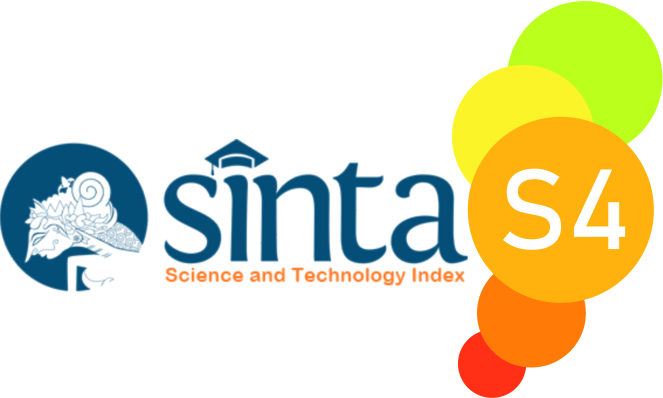The Relationship Between the Demonstration Method and Active Participation in 3 in 1 Junior Operator Custome Made Women Training
 ), Jamaris Jamna(2),
), Jamaris Jamna(2), (1) Universitas Negeri Padang
(2) Universitas Negeri Padang
 Corresponding Author
Corresponding Author
DOI : https://doi.org/10.24036/spektrumpls.v9i3.113732
Full Text:
 Language : en
Language : en
Abstract
This research was motivated by the high level of activity of the training participants in participating in the 3 in 1 Junior Operator Custome Made Women's training at the Padang Industrial Training Center, presumably because the instructor used the demonstration method in learning well. This research is quantitative with a correlational approach. The population in this study were all participants of the 3 in 1 Junior Operator Custome Made Women's Training at BDI Padang, totaling 45 people. While the sample was taken using the Simple Random Sampling technique, as many as 88% (40 people) because 12% of the population was used as a test instrument. The data collection technique used a questionnaire distributed via the google form link https://bit.ly/AngketPenelitianArindhaSukma. The data analysis technique used is the percentage formula and the product moment formula. The results of this study indicate that the training participants already have good learning activities, and there is a significant relationship between the demonstration method and the training participants' learning activities.
References
Achmady, Achmady, A. G. (2017). Penggunaan Metode Demonstrasi dan Model Pembelajaran Tipe Group Investigation (GI) Untuk Meningkatkan Hasil Belajar Kognitif Siswa dan Keterampilan Penggunaan Mikroskop Pada Materi Mikroskop Kelas VII-E SMP Muhammadiyah Kota Kediri. 1(5).
Budiharti, R. (2010). Pembelajaran Fisika Dengan pendekatan CTL (Contextual Teaching and Learning) Melalui Metode Demonstrasi. Prociding Seminar Nasional Biologi, 7(1).
Chien, C. W. (2017). Elementary school English teachers’ professional learning from teaching demonstrations as professional development. Cogent Education, 4(1), 1–20. https://doi.org/10.1080/2331186X.2017.1294229
Dewi, V., & Irmawita, I. (2019). Description of Instructor’s Creativity for Improving Learning Motivation on Prima Data Computer Training Skills. Spektrum: Jurnal Pendidikan Luar Sekolah (PLS), 2(1), 35. https://doi.org/10.24036/spektrumpls.v2i1.101730
Erlin Emilia Kandou. (2013). Pengaruh Pelatihan dan Pengembangan Karyawan Terhadap Produktivitas Kerja Karyawan. ACTA DIURNA KOMUNIKASI, 2(3).
Hayati, M., Aini, W., & Irmawita, I. (2018). Tanggapan Warga Belajar terhadap Penggunaan Metode Pembelajaran oleh Instruktur pada Program Diklat Perhotelan di SPNF SKB Kota Payakumbuh. Spektrum: Jurnal Pendidikan Luar Sekolah (PLS), 1(1), 65. https://doi.org/10.24036/spektrumpls.v1i1.9485
Herlina, E. (2013). Strategi Panti Asuhan Dalam Meningkatkan Kemandirian Warga Belajar Melalui Pendidikan Dan Pelatihan Kewirausahaan. Journal EMPOWERMENT, 2(2).
Jamaris. (2016). Pendidikan Luar Sekolah Dan Kompetensi Pendamping Pendidikan Masyarakat Desa. Jurnal Pendidikan Luar Sekolah, 1(1).
Masek, A. (2019). Mode and Dimension of Facilitation in Student-Centred Learning Approach: A Comparison of Teaching Experience. International Journal of Active Learning, 4(1), 24–32. https://journal.unnes.ac.id/nju/index.php/ijal/article/view/13172
Mubtasim, F. A. (2017). Demostrasi Pada Pembelajaran Life Skill Menjahit Program Paket C. UNSRI.
Mathis Robert, J. J. (2002). Manajemen Sumber Daya Manusia. Jakarta: Salemba Empat.
Nurfauzia, R., & Pamungkas, A. H. (2020). Development of 3 in 1 Training Program for Making Handmade Batik in Padang. 20. https://doi.org/10.24036/spektrumpls.v8i1.107756
Pratama, B. S. (2019). Pelaksanaan Metode Demonstrasi Oleh Instruktur Pada Pelatihan “Kreativitas Menjahit” Di UKM Kota Padang Provinsi Sumatera Barat. Universitas Negeri Padang.
Pamungkas, A. H. (2020). Non-Formal Educational Institutions Provider’s Readiness in the Implementation of the Regulation of the Minister of Education and Culture of the Republic of Indonesia. In Non-Formal Education International Conference (p. 9). Yogyakarta: UGM Digital Press Social Sciences and Humanities.
Ramadhan, N., & Surya, E. (2017). The Implementation of Demonstration Method to Increase Students’ Ability in Operating Multiple Numbers by using Concrete Object. International Journal of Sciences: Basic and Applied Research, 34(April), 62–68.
Roehl, A., Reddy, S. L., & Shannon, G. J. (2013). The Flipped Classroom: An Opportunity To Engage Millennial Students Through Active Learning Strategies. Journal of Family & Consumer Sciences, 105(2), 44–49. https://doi.org/10.14307/jfcs105.2.12
Rozaq, F. (2012). Hubungan Komunikasi Interpersonal Antara Guru Dan Siswa Dengan Keaktifan Belajar Siswa Kelas XI Program Keahlian Teknik Otomatif Di SMK Muhammadiyah 4 Klaten Tengah Tahun Ajaran 20212/ 2013. Universitas Negeri Yogyakarta.
Situmorang, H., & Situmorang, M. (2013). Efektivitas Metode Demonstrasi Dalam Meningkatkan Hasil Belajar Siswa Sekolah Menengah Kejuruan Pada Pengajaran Sistem Koloid. Jurnal Penelitian Bidang Pendidikan, 19(1).
Solfema. (2013). Andragogi Konsep dan Penerapannya. Wineka Cipta.
Solfema, T. B. & A. H. P. (2019). Community Reading Park Development Training (TBM). KOLOKIUM: Jurnal Pendidikan Luar Sekolah, 7(2), 147–153.
Syuraini, J. & J. (2019). Building a Learning Society through the Coaching of Parents and Children in Taman Bacaan Masyarakat (TBM). KOLOKIUM: Jurnal Pendidikan Luar Sekolah, 7(2), 120–126.
Sugiyono. (2014). Metode Penelitian Kuantitatif Kualitatif Dan R&. Alfabeta.
Tesfaye, S., & Berhanu, K. (2015). Improving students ’ participation in active learning methods : Group discussions , presentations and demonstrations : A case of Madda Walabu University Second Year Tourism Management Students of 2014. Journal of Education and Practice, 6(22), 29–33.
Tio Ramadan & Vevi Sunarti. (2021). Description of Support to Non Formal Education Public Leaders in Kenagarian Duku Kecamatan Koto XI Tarusan. SPEKTRUM: Jurnal Pendidikan Luar Sekolah (PLS), 9(1), 145–153.
Waldopo, W. (2018). Strategi Pembelajaran Untuk Kegiatan Pendidikan Dan Pelatihan (Diklat). Jurnal Teknodik, 13(1), 077. https://doi.org/10.32550/teknodik.v13i1.441.
 Article Metrics
Article Metrics
 Abstract Views : 325 times
Abstract Views : 325 times
 PDF Downloaded : 108 times
PDF Downloaded : 108 times
Refbacks
- There are currently no refbacks.

This work is licensed under a Creative Commons Attribution-NonCommercial 4.0 International License.



